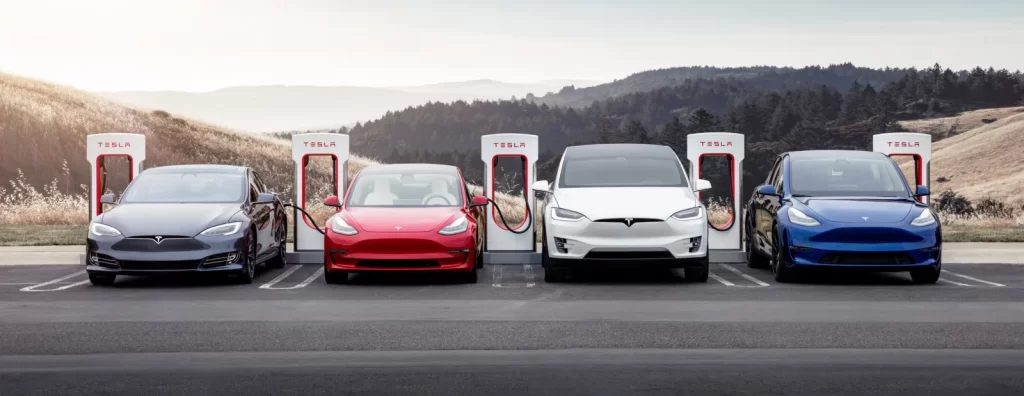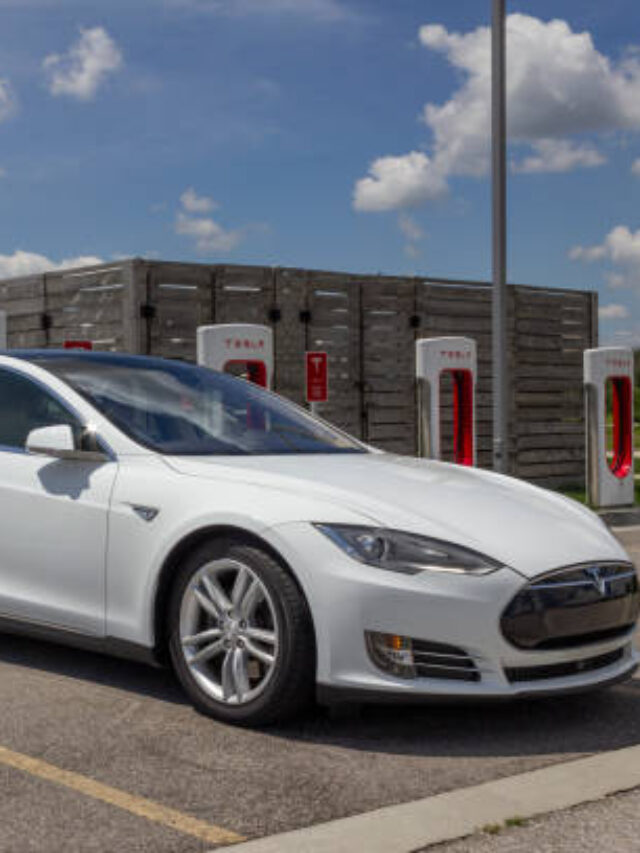
With the advancement of technology and infrastructure, there have been improvements in the minimum range of electric cars, which is expected to continue. Understanding the minimum range of electric cars is essential for evaluating the feasibility of electric vehicles for personal transportation. So what should be the minimum range of electric cars?
The minimum range of electric cars refers to the distance a vehicle can travel on a single charge of its battery. This is an essential metric for evaluating the practicality of electric vehicles and is a critical factor in determining the appeal of different models to consumers.
Factors Affecting The Range Of Electric Cars
The range of an electric car refers to the distance it can travel on a single charge of its battery. This is an important consideration for potential buyers and a critical factor in adopting electric vehicles. Let us look at various factors affecting the range of electric cars.
The range of an electric car is influenced by several factors, including the size of the battery, the powertrain’s efficiency, the aerodynamics of the vehicle, driving habits, and external conditions such as temperature and terrain.
Here are some reasons that affect the range of your electric cars:
| Battery size | Larger batteries typically have a more excellent range, but they are also more expensive and add extra weight to the vehicle, affecting performance. |
| Powertrain Efficiency | An efficient powertrain system that uses less energy to move the vehicle will result in a more extended range. |
| Aerodynamics | Aerodynamic features such as a streamlined design, low drag, and efficient tires can reduce wind resistance and improve efficiency, resulting in a more extended range. |
| Driving habits | Aggressive acceleration, high speeds, and frequent use of accessories like air conditioning and heating can reduce the car’s range. |
| External conditions | Cold weather can reduce battery performance while driving in hilly or mountainous terrain can drain the battery more quickly. |
| Charging habits | Fast charging technologies can quickly recharge the battery, but they can also reduce its overall lifespan, while slow charging overnight can extend battery life. |
Evolution Of Electric Car Range Over Time
The range of electric cars has evolved significantly over the past decade and continues improving as technology advances. In the early days of electric vehicles, ranges were limited to just a few miles, making them unsuitable for most daily driving needs.
However, advances in battery technology and powertrain efficiency have significantly increased electric car ranges, making them more practical and appealing to a broader range of consumers.
The growth of charging infrastructure has also helped to alleviate concerns about range, making it easier for drivers to recharge their vehicles on the go. This has led to a surge in demand for electric cars, and the trend is expected to continue as the technology improves.
How Will A Car With a Good Minimum Range Be Economical?

Everyone looks out for an electric car to be economical, wondering how? A car with an excellent minimum range can be economically advantageous in several ways.
First, a vehicle with a more extended range means fewer stops for charging, making it more convenient for drivers to complete their daily trips without worrying about running out of power. This can save time and reduce the stress associated with range anxiety. Additionally, a car with a more extended range can cover more miles on a single charge, lowering the cost of charging and the overall cost of ownership.
Here are some reasons, why a car with Good Minimum Range will be economical:
- Lower fuel costs: One of the most significant advantages of electric cars is their low operating costs, as electricity is much cheaper than gasoline or diesel. By having an excellent minimum range, electric vehicles can reduce the need for frequent recharging and lower the cost of ownership over time.
- Fewer charging stops: With an excellent minimum range, electric car drivers can travel longer distances without stopping and recharging. This can save time and increase the convenience of driving an electric car.
- Increased resale value: Electric cars with suitable minimum ranges are likely to have higher resale values, as they are more appealing to a broader range of consumers and have longer driving ranges.
- Reduced maintenance costs: Electric cars have fewer moving parts than traditional gasoline-powered vehicles and are less expensive to maintain over time. With an excellent minimum range, electric vehicles can reduce the need for frequent battery replacements, which can further reduce the cost of ownership.
A car with a good minimum range can also reduce the need for a second car for longer trips, making it a more versatile and cost-effective option for families and individuals who need a vehicle for various driving needs.
By choosing a car with a good minimum range, drivers can enjoy the benefits of electric car ownership while also realizing cost savings over time.
Comparison Of Electric Car Ranges Across Different Brands And Models

Electric car ranges vary significantly across different brands and models, making it essential for consumers to compare and understand the range capabilities of other vehicles.
Factors such as battery size, powertrain efficiency, and aerodynamics can all impact an electric car’s range. These differences can significantly impact a driver’s daily use and overall satisfaction with the vehicle.
It is essential for consumers to consider their driving needs and habits when comparing electric car ranges and to look for models that meet their specific range requirements.
| Tesla | Widely known for their long ranges offering over 400 miles on a single charge. |
| Chevrolet | Chevrolet offers a range of electric cars, including the Bolt EV, which has a range of 259 miles on a single charge. |
| Nissan | Nissan’s Leaf electric car offers a range of up to 226 miles on a single charge, making it a popular choice for budget-conscious consumers. |
| BMW | Offers a range of electric cars, including the i3, which has a range of 153 miles on a single charge. |
| Jaguar | Jaguar’s I-PACE electric SUV has a range of 234 miles on a single charge. |
| Audi | Audi offers a range of electric cars, including the e-tron, which has a range of 222 miles on a single charge. |
| Hyundai | Hyundai’s Kona Electric offers a range of 258 miles on a single charge, making it a popular choice for consumers looking for a long-range electric SUV. |
Conclusion
In conclusion, the minimum range of an electric car is crucial in determining its practicality and overall appeal to consumers.
Conclusion#1: Factors affecting the electric car range
Factors such as battery technology, powertrain efficiency, and charging infrastructure can all impact an electric car’s range, and consumers need to understand these factors when considering different models.
The evolution of electric vehicle ranges over time has been driven by advances in technology and infrastructure, and ranges are expected to continue to improve in the future.
Consumers should consider their driving needs and habits when comparing electric car ranges and choose the model that best fits their lifestyle.
Conclusion#2: Benefits of having a minimum range
A car with an excellent minimum range can offer significant economic benefits, including lower fuel costs, fewer charging stops, increased resale value, and reduced maintenance costs.
Electric cars are becoming an increasingly practical and appealing option for many drivers, and the minimum range is an important aspect to consider when evaluating different models.
FAQs
What determines the minimum range of an electric car?
The minimum range of an electric car is determined by factors such as battery size, powertrain efficiency, vehicle weight, and aerodynamics.
How has the minimum range of electric cars evolved?
The minimum range of electric vehicles has improved over time due to advancements in battery technology and powertrain efficiency.
Why is the minimum range of an electric car significant?
The minimum range of an electric car is substantial because it determines how far the vehicle can travel on a single charge, which impacts the vehicle’s overall practicality and appeal to consumers.
How do I determine which electric car has the best minimum range for my needs?
To determine which electric vehicle has the best minimum range for your needs, you should consider your daily driving habits, the distance you travel, and your personal preferences.
Are there other factors that can impact the minimum range of an electric car?
Other factors affecting the minimum degree of an electric vehicle include weather conditions, driving style, and road conditions.
How does the minimum range of an electric car compare to traditional gasoline-powered vehicles?
The minimum range of an electric car is typically shorter than that of a conventional gasoline-powered vehicle but advances in battery technology and powertrain efficiency are closing the gap.
Can the minimum range of an electric car be improved?
It can enhance the minimum capacity of an electric vehicle by upgrading the battery, powertrain components, or aerodynamics, but this may impact the vehicle’s cost and weight.
Post Related to Electric Car and Battery
- Does Polyjoule Battery have Fire Resistant for Electric Car Under Hot Weather?-A complete guide 2024
- Tesla Range Mode Explained
- Tesla Dead Battery Opens Door From Outside – 2024 Safe Guide
- Tesla Model 3 Range Increase in 2024
- Energy Saving Mode Tesla-A Complete guide 2024
- Are Tesla’s Battery Powered?
- Why are Electric Car Batteries Measured in Kilowatt-hours (kWH) and Not Ampere-hours (Ah)?-A Complete guide 2024
- How Battery-Swapping Revival Could Threaten Electric Car Charging Networks?-A complete guide 2024
- Electric Cars Eventually Have More Range 2024
- why does tesla not add more batteries to increase its electric car range?
- Cheapest Tesla 2024 and Cost
- Are Electric Cars Really Saving Money at The End of the Day?-An Ultimate guide 2024
- Tesla Range Miles (Model X, Model S, Model Y, Model 3)-Ultimate And Complete Guide-2024
